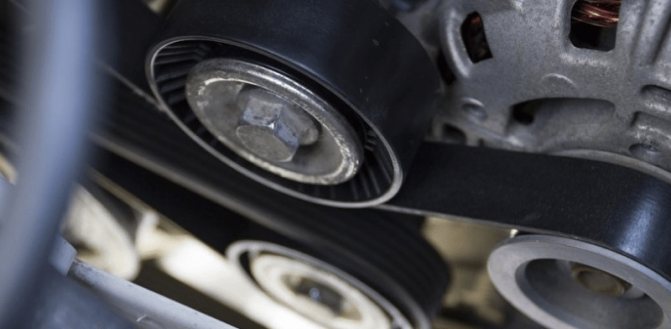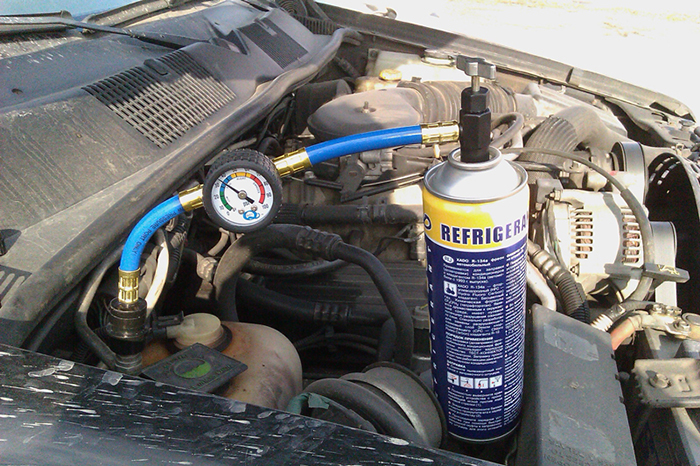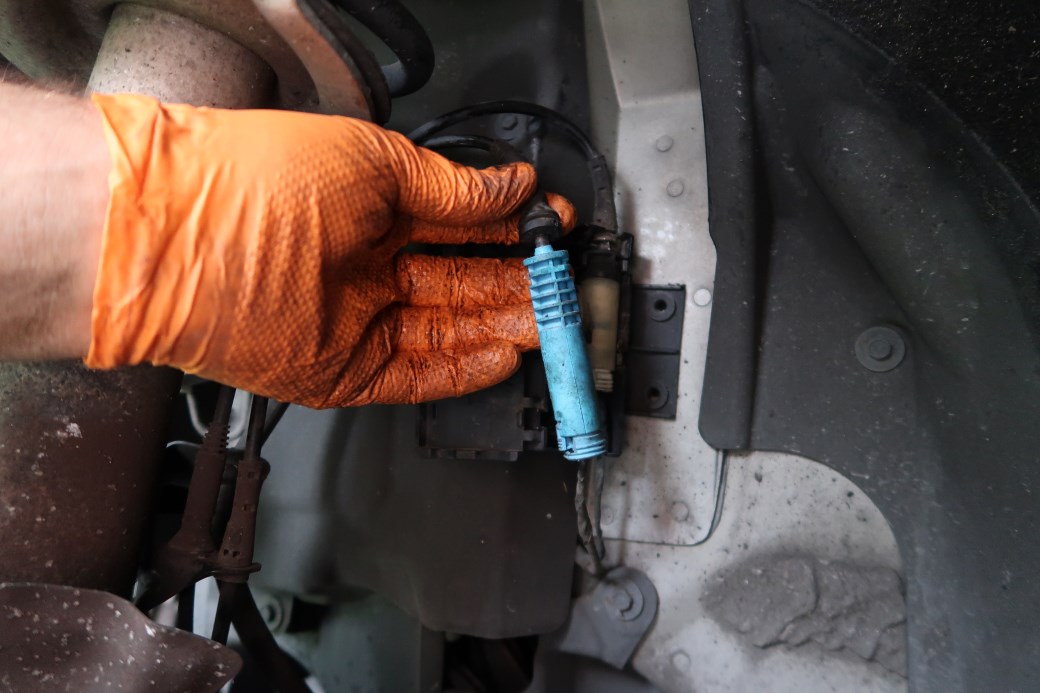 Many drivers had to deal with the problem when the car battery starts to fail.
Many drivers had to deal with the problem when the car battery starts to fail.
It was discharged, stood on charging, worked some hours and again showed a zero charge. Or even when connected to the charger the battery charge is not increased.
In such a situation, do not rush to throw the battery in the trash, because the problem may still have a solution. And the first thing to do if the battery is not charging – is to find the cause of the problem, and what we will do.
The battery is not charging: how do I know?
When the car battery does not charge, it is felt by the operation of all electrical appliances. It is continuously recharged by an electric battery in normal operation. Due to this, even if the battery of the car with a manual transmission is discharged to “0”, start the car is still possible – with “push” or “tug.”
But often there are situations when, despite the operation of the generator, the battery remains in a discharged state. So how do you check if the battery is charging? To do this, you can do a straightforward way: take the tester and measure with it the electrical voltage at the terminals of the battery. If the battery is not charged, the tester will show the result of only 12 V, if it is usually charged the figure will be 14 V. Such a test must be carried out on a running engine. Otherwise, you will not get the result.
Interesting to know! The prototype of the modern battery appeared in 1803. Its creator was IV Ritter, who just set 50 circles of copper on top of each other, shifting them with a damp cloth.
If the engine cannot be started, the voltage on the battery terminals can be checked using the same tester. At the same time, if the tester shows a value of less than 11.8 V, it will indicate that the battery has zero charges. The charge is almost complete or 100% if this figure is about 12.8 V.
Also, if the battery is fully charged while it is connected to the charger, the voltage at its terminals will continuously change during this process. If at first the voltage is continuously increasing, and then stopped at one value – then the battery is fully charged. If it has not changed since the connection to the mains, it means that the battery is not being charged.
We would also recommend you to check out such a device as a battery maintainer. We have gathered useful information about them which you can read here.
The most obvious reasons why the battery is not charging
The realization that the battery is not charging is not enough; it is also necessary to understand the causes of such a problem. It should be noted that in some cases, although the battery is fully charged, after charging very quickly sits down. In this case, the cause may be hidden in the leakage of electricity, which could be due to the unconnected dimensions or interior lighting.
If the reason is still in the battery, then, most likely, the sulfation of its plates led to such a thing – they were covered with a white coating, which is lead sulfate in a large-crystalline form. If sulfite area minor – it could easily be remedied.
Important! If sulfite had time to affect vast areas – so the battery is no more extended subject to recovery.
If the battery is not in principle charged by the charger and the generator, then the reasons may lie in the oxidation of the terminals, the breakage of the generator belt or in the oxidation of the wires that are on the generator belt.
Terminals oxidized
This is one of the most common and banal reasons that the battery is not charged either from the charger or from the generator. If the terminals appeared whitish plaque, it would significantly increase their resistance, so loading and will not occur.
You can remove this plaque, but you need to act very carefully. To do this, take sandpaper with the smallest grains and carefully walk on the affected surface of the terminals. It should be understood that the lead from which the terminals for car batteries are made, has a very soft structure, so under the influence of friction, it can easily break. Also, if the terminals are leaky from cleaning, they will then be difficult to clamp.
Alternator belt break
Another reason that the battery does not charge from the generator may be the loss of its belt. By the way, sometimes even its weakening and slippage on the pulley can lead to the same result – the battery will only be discharged. If the belt is torn – you can see it with the naked eye. You can fix the problem by replacing it.
If the belt just started to slip during operation, without giving the battery the required amount of charge, the reasons can be very different. This may be because it is very worn out and because during operation there was a natural stretching.
Important! Often the slip of the alternator belt causes water to get on the pulley, which significantly changes the force of the clutch between it and the belt, which leads to the inability to charge the battery fully.
The belt must be replaced if it is worn. In all other cases, you can slightly tighten the belt and observe the operation of the generator and battery. If charging usually goes, let the belt continue functioning in a position in which you to tutor it.
Oxidation of wires on the generator
If the battery is not charging, the reason may also be the oxidation of the generator wires. In this case, the situation can be saved by conventional stripping, which is carried out using the same sandpaper.
But the wires can not only oxidize but also break or burn out as a result of a voltage drop. The smell of burnt insulation will help you to determine that the wires have burned out. In this case, you will have to become an electrician for a while and replace the burnt wires, after identifying the cause of the incident and eliminating it. If the same replace wires and not solve the problem, the situation can recur with even more dire consequences.
Good to know! Even if the battery has a full charge, but is not used, it gradually discharges. This process is called self-discharge and is considered quite normal for electric batteries.
The battery is not charged by the charger: check external factors of malfunction
In the charging system of the car battery, there are some external devices, which can also greatly depend on the performance of the battery itself and the process of charging it. Again, to test external devices, you will need a tester to measure the voltage at the battery terminals. However, the test should only be carried out with the engine switched off and the battery wires disconnected.
Typical for the battery terminals is the voltage from 12.5 to 12.7 V. If after connecting the battery and starting the engine, the voltage did not rise to 13.5-14 V, it is worth trying to increase the dynamics of the engine and watch how the voltage on the battery terminals will change. In that case, if at high engine speeds the voltage will drop, the reason may be hidden in the diodes of the relay controller of the car generator. But it is useful in a situation where the battery is not charged and does not work correctly, and will pay attention to the generator brushes that can wear out.
The diodes can either be replaced merely, or the regulator relay can be replaced entirely. It is worth remembering that the diodes in the normal state should pass current flows only in one direction. If they move in both directions, then one of the diodes is broken. Also, when replacing diodes will have to work with soldering irons with a capacity of 600 watts, which will require considerable practice.
Important! To replace diodes be sure to pick up ones of the same brand and with the same characteristics as the punched.
After installing the new diodes, make sure they work. If they start to heat up when the engine starts, the battery will receive too high a current, which is highly undesirable. And when overheated diodes are not able to provide a long service life. For this reason, if the diodes do not charge the battery, it is better to replace the controller relay immediately.
Looking for faults in the battery and eliminate them
When the generator is running but not charging the battery, the reason may be hidden in the battery itself. The faults car battery can be very different, so consider them in more detail.
Sulfation
If the battery is not charging and shows zero charges, perhaps the reason is the sulfation of its plates. We have already mentioned above, here is another way that will help to cope with this problem and return the batteries to life:
- Rinse the battery with distilled water, washing out all the debris.
- Allow the battery to dry entirely and charge if possible.
- Bring the density of the electrolyte to an indicator of 1,285 g/cm3, for which it is necessary to use a liquid with a density of 1.4 g / cm3.
- Do not allow the electrolyte to boil or heat up too much!
- Continue to charge the battery until the charge in each section reaches 1.3-1.4 V.
- Do two times lower charging current, but continue charging.
- If within two hours the voltage on the sections and the density of the electrolyte remain unchanged, the charging process can be stopped.
- Top up the electrolyte and distilled water.
- With the light bulb turned on, we reduce the voltage on each section to 1.7 V.


